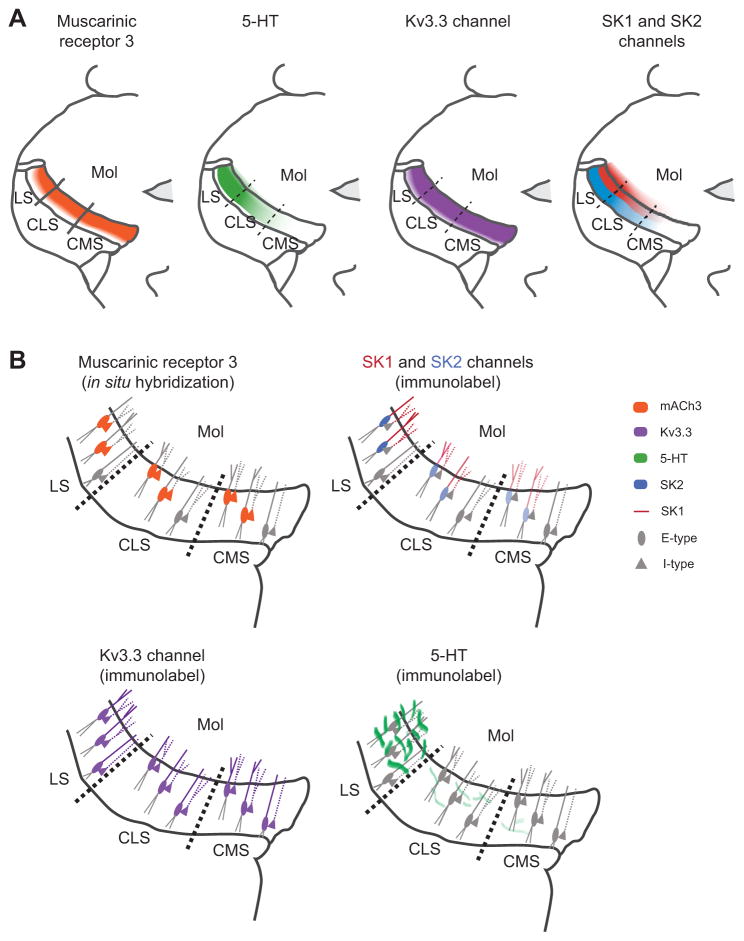Fig. 2.
(A) Graphical representation of the distribution of muscarinic receptor 3 (mAChR3) (Toscano-Márquez et al., 2013), serotonergic fibres (5-HT) (Deemyad et al., 2011), Kv3.3 channels (Rashid et al., 2001a) and small-conductance calcium-activated potassium channels (SK) channels (SK1 and SK2) (Ellis et al., 2008) in the three tuberous maps of the ELL. mACh3 and Kv3.3 channels present a homogeneous distribution within the three segments while 5-HT and SK channels show a higher expression in the lateral segment (LS), almost none in the centromedial segment (CMS) and intermediate expression in the centrolateral segment (CLS). (B) Graphical representation of the distribution of mAChR3, 5-HT fibres, SK and Kv3.3 channels in the six types of pyramidal cells across the three segments of the ELL. mAChR3 and Kv3.3 are expressed in superficial and intermediate cells of both E- and I-type pyramidal cells. Additionally, Kv3.3 is present in deep pyramidal cells of the three segments. Serotonin fibres reach both E- and I-type pyramidal cells, but their density differs between segments. SK1 channels are localized in the apical dendrites of both E- and I-type cells with differential distribution in the three segments. SK2 channels are present only in the somata of E-type pyramidal cells, with a higher expression in the LS. Mol, molecular layer.

